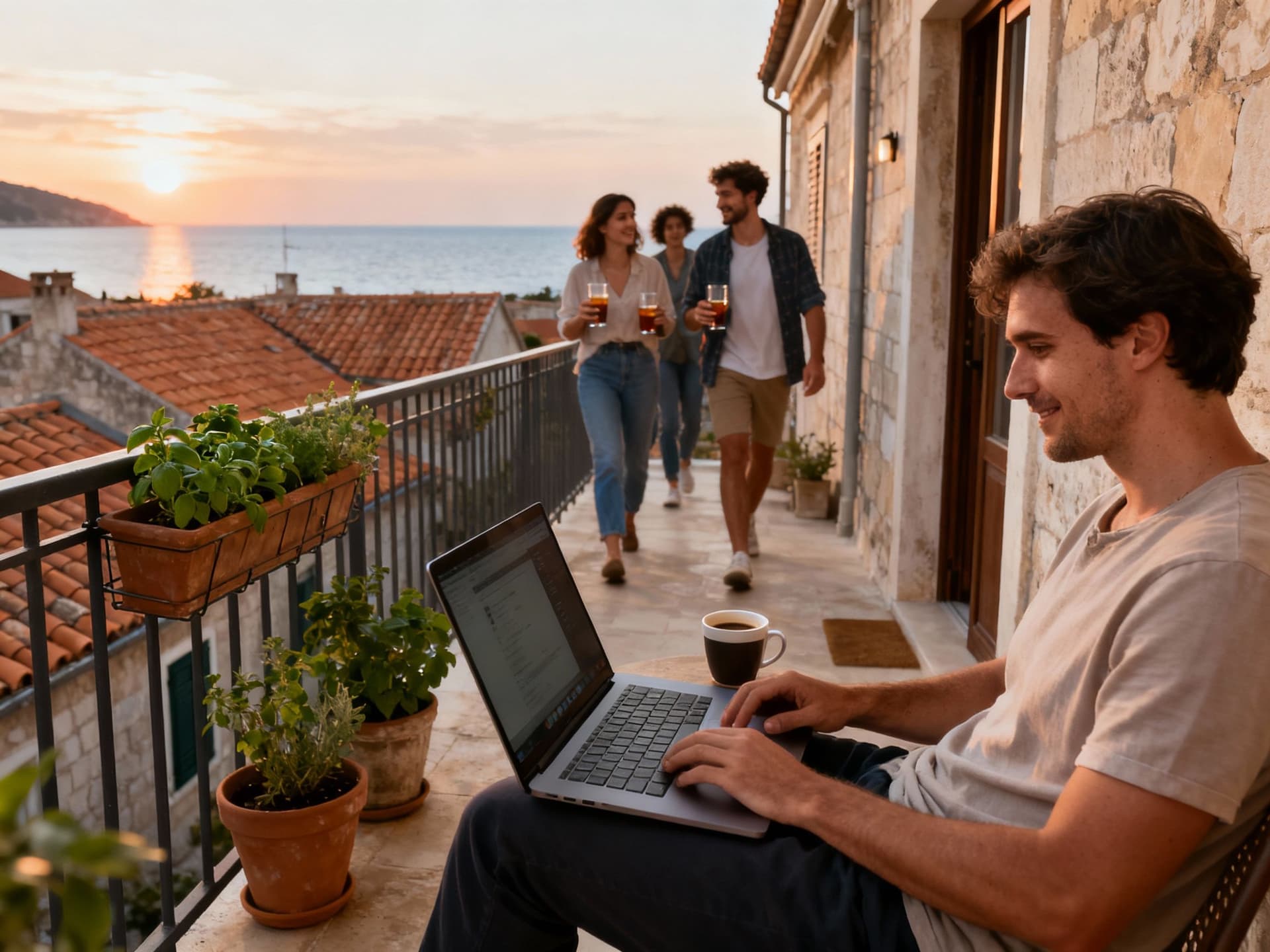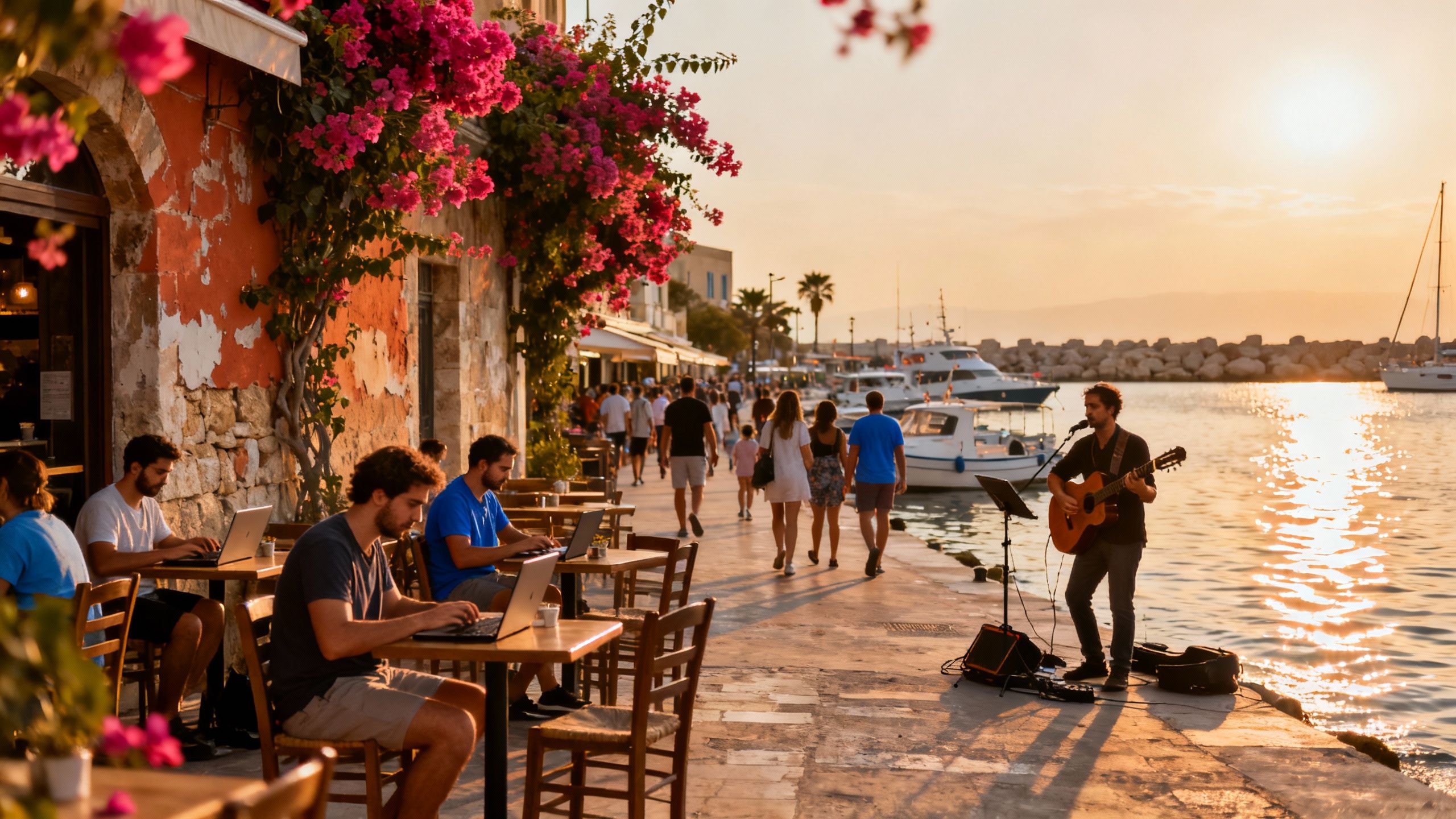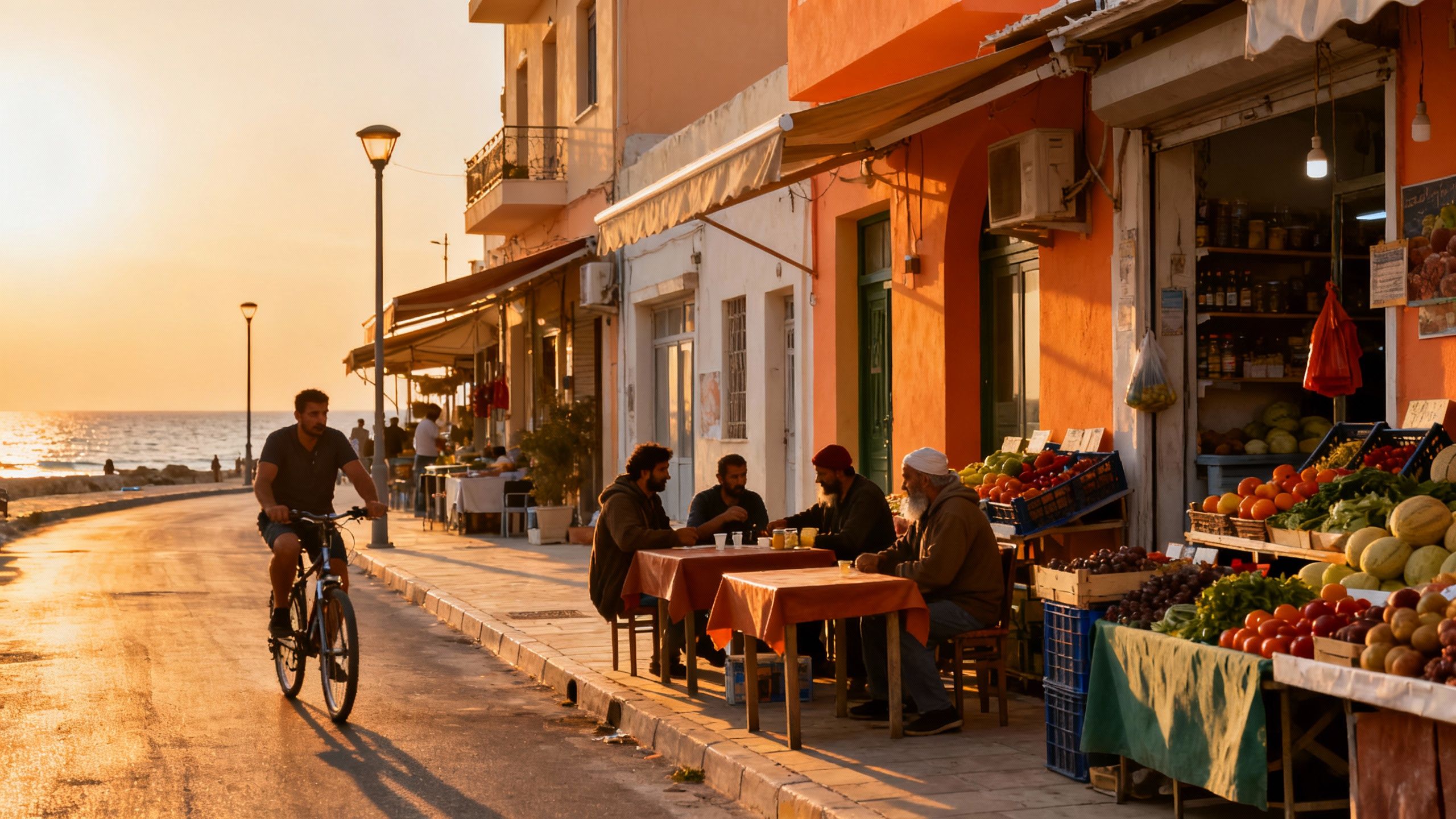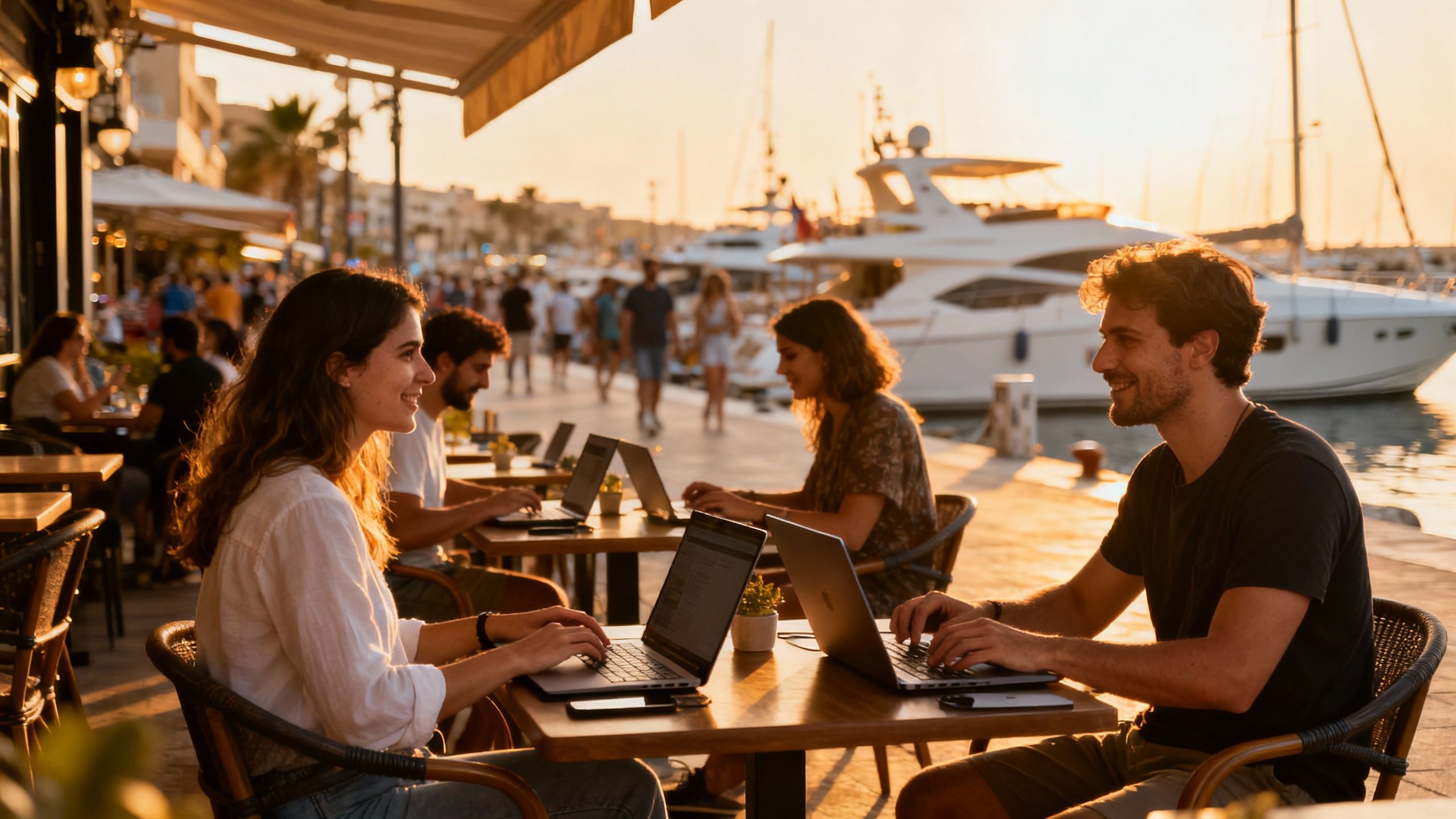Money Moves for Croatia: Lifestyle‑First Finance Steps
Croatia’s appeal is real — but 2024–25 tax, rental and lending changes mean smart buyers pair dreamy streets with bank‑ready steps: OIB, accounts, FX plans and red‑flag checks.
Imagine sipping espresso under plane‑trees on Split’s Riva at sunrise, laptop open, then cycling home past a stone piazza where local bakers line up their loaves. That easy, sunlit life is why people fall for Croatia — but money matters decide whether it becomes yours. Recent market shifts and new rules mean currency moves, bank choices, and lending limits now shape the dream almost as much as the view.
Living the Croatia lifestyle

Croatia folds Mediterranean ease, island escapism and a thriving café culture into towns where historic stone meets modern coworking. Days smell of grilled fish and espresso. Evenings are for community — konobe in Dubrovnik’s Old Town, craft bars in Zagreb’s Tkalčićeva, fish markets in Zadar. For nomads, the practical win is variety: coastal terraces, quiet hilltop villages, or buzzy city flats with fast fibre.
Neighbourhood spotlight: Split — Diocletian’s charm, modern rhythm
Picture staying near Varoš or Bacvice: morning swims, lunchtime markets on Marmontova, evening meetups at Backpackers’ Club. These pockets blend community with coworking (several spaces and cafés advertise solid Wi‑Fi). In practical terms, properties here range from renovated 19th‑century apartments to new builds; each comes with differing utility setups, insulation quality and service costs to check before offers.
Food, markets and seasonal flow
From fish markets on Hvar to farmers’ stalls in Istria, Croatia’s food scene maps to lifestyle choices. If you love weekly market runs and fresh produce, look for properties near local markets (e.g., Dolac in Zagreb). If nightlife and restaurants matter, aim for central streets where you trade quiet evenings for walkability and higher service fees.
- Lifestyle highlights: Bacvice beach swims, Dolac market mornings, evening konoba dinners in Korčula, coworking in Zagreb’s Đorđićeva, ferry runs from Split to Brač.
Making the move: practical considerations

The romance of cobbled streets meets bank forms the moment you decide to buy. Since 2024–2025 policy and tax conversations are reshaping affordability — from new property tax proposals to tightened lending rules — so smart buyers fold banking strategy and currency planning into lifestyle choices.
Property types & how they match your life
Seaside stone apartment: low maintenance, ideal for short stays and rentals. Inland villa with a garden: more space, higher utility and upkeep. New build on the coast: modern insulation and fast internet but higher purchase price and HOA fees. Match type to your routine: frequent travel favors low upkeep; long‑term remote work favors space, reliable fibre, and a quiet street.
Working with banks: open an account (OIB number required) and decide if you need a resident or non‑resident account. Many banks let non‑residents open accounts in person; having an OIB and passport is essential. Consider a multi‑currency option if you’ll be paid in euros or USD to reduce FX friction.
- Steps for finance readiness: 1) Get an OIB (tax ID) — essential for any property transaction. 2) Open a Croatian bank account in person and ask about multi‑currency cards. 3) Check DSTI and LTV limits with banks — recent guidance caps debt service and LTV bands for applicants. 4) Lock FX strategy: use specialist FX services for deposit and final payment to avoid losing 2–4% on conversions. 5) Pre‑approve mortgages where possible — foreign buyers often face extra paperwork and slightly higher rates.
Insider knowledge: what expats wish they'd known
Real talk: foreign buyer activity cooled after 2022’s peak — a mix of price rises, policy shifts and rental regulation changed the calculus. If you bank on short‑term rental income, factor in emerging restrictions and taxes aimed at freeing up long‑term housing for locals. Long‑term lifestyle buyers fare best when they prioritise community fit over headline yield.
Cultural integration: language, neighbours, and weekend life
Croatians value small‑town ties. Learn a few phrases, show up at the market, and you’ll be invited to a konoba within weeks. That friendliness affects property decisions — a noisy tourist street may feel lively at first but can erode daily peace. Check evening noise, ferry timetables, and neighbour profiles before buying.
Long‑term costs and tax thinking
Watch tax changes: proposals to shift tax burdens onto property (with per‑m2 charges) and clampdowns on short‑term rentals can change net costs. Factor potential property taxes and longer‑term regulation into yield estimates — what looks profitable today may narrow as rules evolve.
- Expat red flags to check before you buy: unclear ownership history, missing building permits, unreliable internet speeds, absence of insulation/heating details, and proximity to permitted short‑term rental zones.
- Practical checklist before signing: 1) Verify ownership and cadastre with a notary and request land registry extracts. 2) Confirm building permits and renovations with local municipality. 3) Test internet speed on‑site at different times of day. 4) Get a written quote for recurring costs: community fees, utilities, and property tax estimates. 5) Arrange a currency plan for the deposit and final payment (FX broker or multi‑currency account).
Conclusion: Croatia is a place you can fall in love with — and buy into wisely. Start with lifestyle priorities (neighbourhood, pace, market seasonality), then lock the financial plumbing: OIB, bank account, FX plan, pre‑approval, and a practical checklist for red flags. Use a local agent who speaks your language and knows both beaches and bureaucracy — they’ll translate the local rhythm into a realistic purchase plan so your Croatian life starts with coffee, not stress.
Danish investor and relocation advisor focusing on Portugal and the Algarve; loves coworking culture and expat networks.


